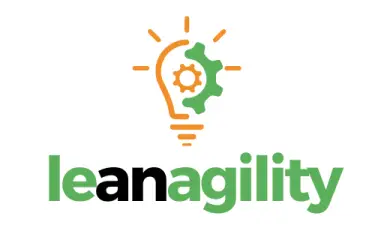Assessing the Flow of Your System
When operating within a flow-based Kanban system, there are several guiding principles that I believe most teams would benefit from considering. While I wouldn’t assert these as strict rules, they serve as suggestions for achieving success.
Principle 1: Work Selection
“Ensure your work selection process is significantly quicker than the time required for task completion.”
Considerable time and effort are often invested in devising formulas and processes to refine our work selection procedures. It’s a logical pursuit; complex systems possess limited capacity to convert all incoming demand into valuable products efficiently. Moreover, much of the anticipated demand often yields results different from initial expectations. For instance, features expected to be popular may flop, while minor ones unexpectedly soar in popularity.
Despite our efforts to mitigate uncertainty through elaborate analysis and planning, the outcomes remain largely unchanged. Why? Because regardless of the depth of our analysis, these features remain “unknown unknowns” until delivered. Value is an assertion until tested in the marketplace.
Hence, any work selection process must be lightweight and swift compared to the time required to transform ideas into deliverables for validation.
Principle 2: Work Pulling
“Commence work not merely because you can, but because you believe you can complete it.”
We frequently encounter scenarios where work initiates solely because someone has the capacity to undertake it, overlooking potential impediments that could disrupt workflow. Whether it’s a team member’s absence or dependencies on external factors, commencing work without ensuring smooth progress jeopardizes efficiency.
In environments with dependencies, it’s essential to anticipate downstream impediments and base pull decisions on this insight. Similarly, teams initiating work should assess upstream activities to foresee potential delays and make informed pull decisions.

Principle 3: Wasteful Work
“Treat work in progress as potential waste; value is realized only upon meeting someone’s needs.”
How often have we witnessed testers burning the midnight oil before a sprint’s end, while developers eagerly start new tasks? Upon implementing Kanban, existing dysfunctions are laid bare, presenting an opportunity for improvement. However, immediate intervention is often withheld, allowing teams to comprehend their system’s intricacies and drive change autonomously.
With enhanced visual management, common dysfunctions such as bottleneck identification and team collaboration issues become apparent. Rather than imposing immediate fixes, empowering teams to recognize and rectify these issues fosters ownership and drives meaningful change.
Principle 4: Incentivizing Work
“Delay rewards and incentives until late in the workflow to foster collaboration.”
In many organizations, incentives are tied to handover points between siloed departments, hindering cross-functional collaboration. For instance, a sales team incentivized solely on closing deals may overlook the organization’s capacity to fulfill new customers’ needs, resulting in strained resources and dissatisfied clients.
Shifting incentives to later stages in the workflow encourages a holistic view of business processes and nurtures collaboration across functions.
Principle 5: Business Agility
“Focus on improving agility beyond the team level to address broader organizational challenges.”
While enhancing team-level agility is crucial, solely concentrating on teams often overlooks larger organizational complexities. Even mid-sized companies grapple with managing scheduling, coordination, and dependencies across various functions.
Emphasizing business agility beyond individual teams can lead to more profound and sustainable improvements in organizational performance. By directing attention to coordination and portfolio management, organizations can unlock significant opportunities for growth and efficiency.
Optimize Your Value Delivery by Optimizing Flow
If you are looking for some proven and easy ways to improve the flow of your work – Kanban is the perfect choice for acheiving that. Kanban is a strategy for optimizing the flow of value through a process that uses a
visual, pull-based system. As most workflows exist to optimize value, the strategy of Kanban is to optimize value by optimizing flow.
Optimization does not necessarily imply maximization. Rather, value optimization means striving to find the right balance of effectiveness, efficiency, and predictability in how work gets done:
- An effective workflow delivers what customers want when they want it.
- An efficient workflow allocates available economic resources as optimally as possible to deliver value.
- A more predictable workflow means being able to accurately forecast value delivery within an acceptable degree of uncertainty.
Because Kanban can work with virtually any workflow, its application is not limited to any one industry or context. Professional knowledge workers, such as those in finance, marketing, healthcare, and software (to name a few), have benefited from Kanban practices. Kanban seamlessly integrates with any process. Whether you’re practicing Scrum, SAFe, or another framework, incorporating Kanban as a strategy will markedly enhance your value delivery.
Where Should You Start From?
ProKanban.org is recognized as a leading institution in the realm of Kanban training and certification. Leagility is their official training partner and offers a wide range of ProKanban.org training courses tailored to your organizational needs.
If you are just starting – our recommendation is the Applying Professional Kanban training course but feel free to visit the Courses Overview page and get more details about our offerings. We are here to support your journey!

